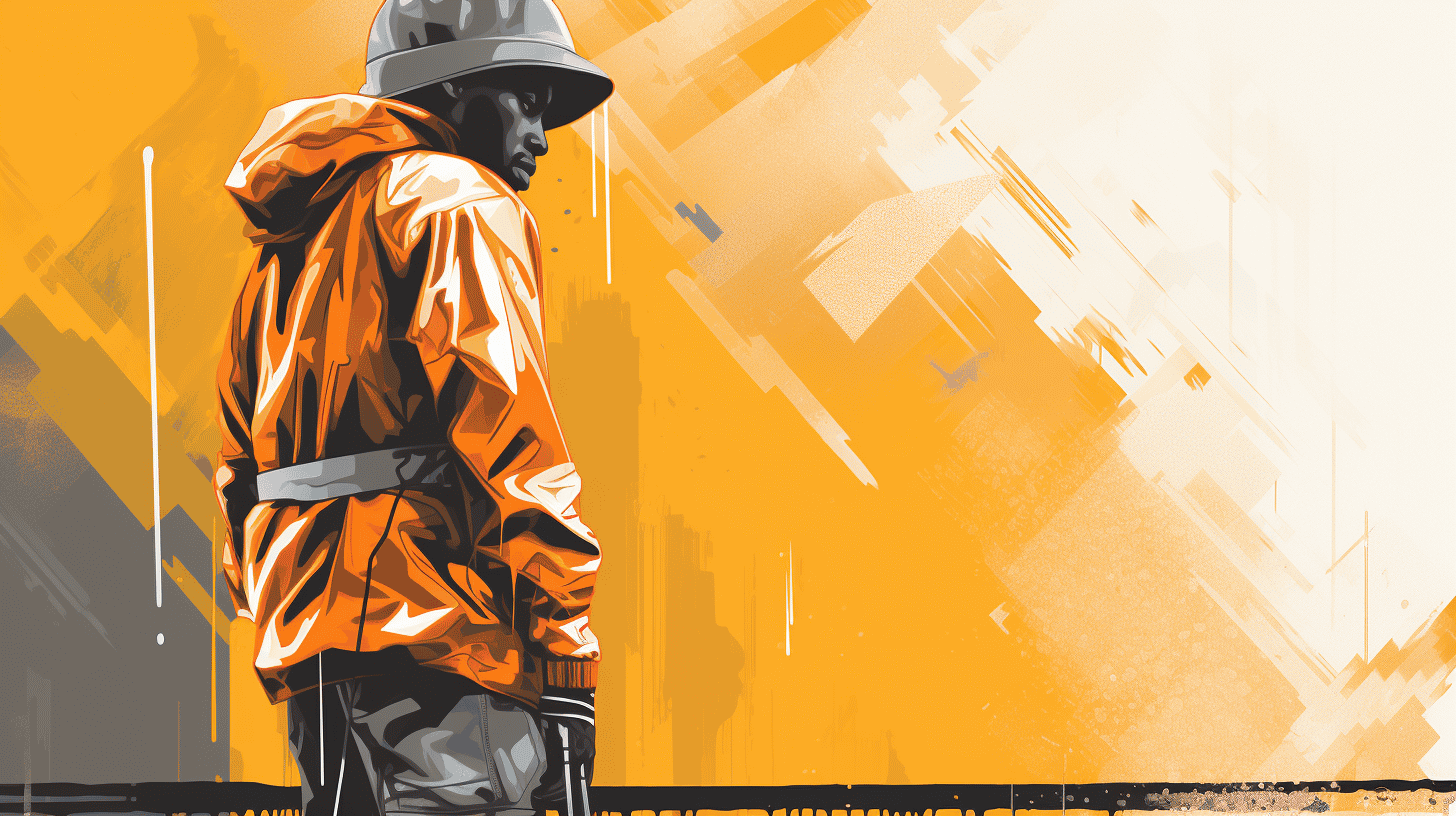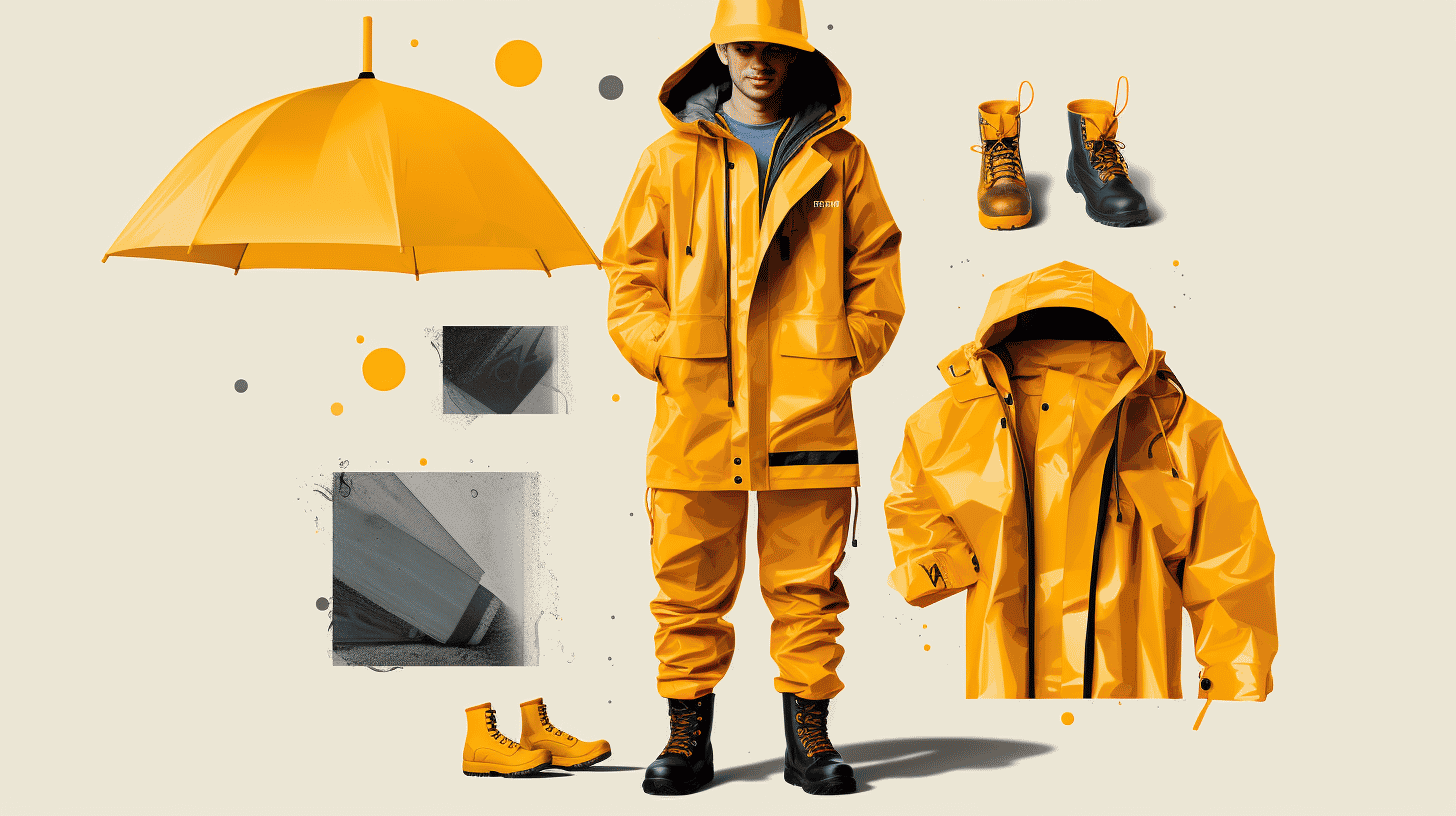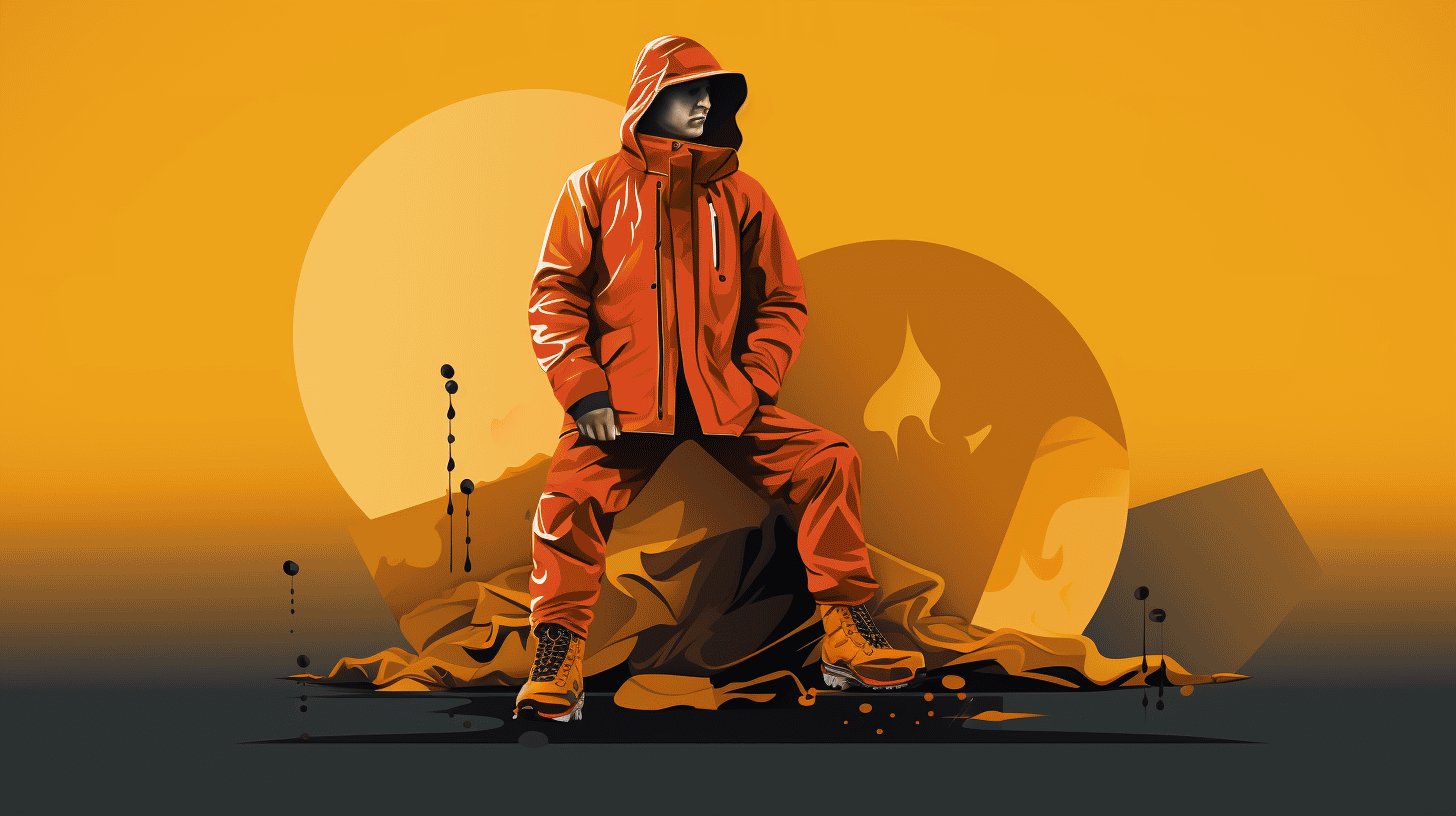Current Rainwear Market for Construction Workers
The current rainwear market for construction workers is experiencing an extraordinary period of success and growth. Valued at a staggering $3864.7 million in 2022, the sector continues to thrive primarily due to the urgent need for advanced rain protection in the ever-expanding construction industry.
A major contributing factor to the growth of the rainwear market is the subsequent increase in construction activity globally. Higher levels of construction in residential and commercial sectors require more personnel on the ground. These workers are under constant exposure to varied environmental conditions, making the need for waterproof and weather-resistant wear increasingly important. Thus, a rise in the demand for quality rainwear leads to an upsurge in market value.
Factors Driving the Market
- Increased Construction Projects
- Growing Need for Protective Wear
- Weather Resistance Demanded by Workers
As well as climatic requirements, safety regulations play a significant role in boosting the rainwear market's growth for construction workers. It's not just about protecting the individual worker from the elements. Industry leaders in the realm of rain gear for construction workers, for example, prioritise producing equipment that enhances visibility, thereby ensuring worker safety during poor visibility caused by inclement weather conditions.
" It's not just about protecting the individual worker from the elements."
The rainwear market is also fuelled by technological advancements enhancing the quality of the gear. Innovations, such as materials that are more waterproof, lightweight, breathable, but also sturdy, are setting new standards for rainwear. As manufacturers continue to invest in research and development, the upcoming years seem promising for the rainwear market for construction workers.
Embodying this trend are the Industry Leaders in Rain Gear for construction workers, a group renowned for producing highly resilient and durable rainwear. This ongoing market expansion reflects the industry's continual effort to meet construction workers' needs, prioritizing both comfort and protection.
A staple in any construction site, rain gear has become more than just a shield against the elements. It's a part of a worker's everyday armor, contributing to improved work conditions, heightened morale, and increased productivity. And with the industry's current upward trajectory, this piece of protective wear will continue to gain importance, diversify in its offerings, and revolutionize construction sites' landscapes.
Workplace Injuries in the Construction Industry
When it comes to hazardous job sectors, the construction industry is oftentimes top of mind. As indicated by the U.S. Department of Labor, although construction workers represent only 4% of the total workforce, they account for an alarming 21% of work-related deaths. With this in mind, let's delve deeper into the primary causes of injuries in the construction industry - starting with the most common culprit: slips and falls.
Slips and Falls
Construction sites are rife with opportunities for slips and falls due to their dynamic and unpredictable nature. Obstacles can change daily, even hourly, creating a high-risk environment. Debris, wet surfaces, improperly maintained tools, or insufficient safety equipment can lead to unfortunate incidents. According to the Bureau of Labor Statistics (BLS), slips and falls constitute a significant portion of workplace injuries, with an alarming 450,540 cases reported.
Safety measures play a crucial role in mitigating these risks. These can include, but are not limited to:
- Providing appropriate personal protective equipment (PPE).
- Promoting regular safety awareness training.
- Enforcing strict adherence to safety protocols.
- Regular maintenance and inspection of equipment and construction space.
Quoting an industry expert, "Prevention is always better than cure, especially in the construction industry where injuries can be severe. Understanding the risks and implementing safety measures is the key to safeguarding workers."
High Workplace Death Proportion
Despite being a small fraction of the workforce, construction workers bear a disproportionately high risk of workplace deaths. As expressed earlier, research by the U.S. Department of Labor shows that construction represents 21% of total occupational fatalities, while only accounting for 4% of workers.
The high levels of risk in this industry are mainly attributed to:
- The hazardous nature of construction work,
- Inadequate safety measures,
- Insufficient training,
- Non-compliance with safety regulations.
Clearly, the industry must institute stricter controls and regulations to reduce this startling proportion of workplace deaths. By recognizing the hazards, understanding their causes, and implementing best practices in safety management, we can create a safer environment for our hardworking constructors. As always, vigilance, safety, and continuous training should be the cornerstone of any construction enterprise wanting to protect its most valuable asset: its workers.
Role of High-Visibility Rain Gear
Unpredictable weather should not be an obstacle when it comes to working outdoors. Ensuring the safety of the workforce is the responsibility of every organization or employer, and this is where the use of high-visibility rain gear comes into play.
Regarded as an integral part of safety protocols in many industries, high-visibility rain gear is not just clothing but is often perceived as a mobile guardian protecting lives while we perform our duties.
Increased Visibility
First and foremost, let's look at how this gear aids in increasing visibility.
For many outdoor or roadside workers, foggy weather, heavy rains, and gloomy environments pose substantial visibility challenges. They may restrict the worker's sight lines and ability to spot potential hazards. Not only that, the weather can also lead to struggles in being seen by others operating heavy machinery, or driving by.
Enter high visibility rain gear:
- It is designed with reflective tapes or stripes that can reflect even the smallest glimmer of light. This helps ensure the worker is noticeable and distinguishable from the surroundings, even under the toughest conditions.
- The bright neon colors of the gear stand out against the environment, making the wearer more visible. This becomes critically important in low light situations where the color can immediately catch the attention of anyone nearby.
Frontline Defense Against Accidents
High visibility rain gear is not just about being seen but also about staying protected. Consider it as a safeguard, a frontline defense against accidents primarily in the construction industry.
- When operating in environs laden with heavy machinery, sharp tools, and other potential hazards, the protective layers of the gear offer a shield to safeguard against direct impacts.
- Also, the water-resistant nature of the gear saves workers from getting drenched, ensuring they comfortably carry out tasks without the hassle of dealing with sodden clothes.
Overall, it's safe to say that high-visibility rain gear is an unsung hero in maintaining safety and mitigating accident risk in harsh working conditions. It provides the dual benefit of not only making sure workers are seen but also acting as a protective shield, making their well-being a priority.
The Need for Rain Gear in Wet Conditions
Keeping dry and safe in harsh, wet conditions is more than wearing just an ordinary coat and boots. It calls for the need for specialized rain gear that goes beyond giving the wearer a dry comfort, especially for people working in industries such as construction. The need becomes even more critical when we observe how wet weather can make surfaces slippery, and consequently, hazardous.
Hazardous Slippery Surfaces
When wet, surfaces often become dangerously slippery. This condition poses a particular threat for construction workers who operate in an environment where balance and grip are key to safety.
Here are a few reasons why slippery surfaces can become hazardous in a construction setting:
- Increased risk of slips and falls: Water reduces the friction that we traditionally find on surfaces. Thus, construction workers are more prone to slips and falls, which might lead to serious injuries, or in the worst case scenario, fatalities.
- Difficult Equipment Handling: Operational efficiency can suffer a great deal during wet conditions. The quintessential construction machinery and tools become tougher to handle, potentially causing delays in project timelines and overall productivity.
- Electrical Hazards: Water acts as a conductor of electricity. Therefore, exposed wiring and water gathered at a construction site can set the stage for an electrical hazard.
Now, one might wonder how to mitigate these risks?
Simply put, having appropriate rain gear designed for wet and slippery conditions can significantly reduce these risks. Take a moment to ponder the advantages of incorporating such equipment into your daily work routine:
- Reduced risk of injuries: Well-made rain gear gives better traction, reducing the chances of slips and falls.
- Ease of work: It provides a better grip on equipment, enhancing operational efficiency even in wet weather.
- Added protection: High-quality, waterproof equipment guards against potential electrical hazards.
For any construction worker, having the Essential Rain Gear Needs is a must, regardless of their role on the site. Armed with the right rain gear, workers can navigate safely and productively, no matter the weather, thereby contributing to making the construction industry safer and more resilient.
Materials Utilized in Rain Gear
The functionality of rain gear is essential for activities that demand exposure to wet or damp environments, such as fishing, camping, hiking and, notably, construction work. From keeping us dry during a heavy downpour to protecting us from the misty drizzle, rain gear is our bulwark against unfavorable weather conditions. With its origins dating back to the early 1820s, the technology and materials involved in fabricating rain gear have radically evolved. Today, rain gear is made from a wide array of materials, each with unique properties that offer users distinctive benefits. However, if we delve into the most common materials used in making rain gear, we'll find that rubberized or plastic jackets and water-repellant fabrics take center stage.
Rubberized or Plastic Jackets
Let's start with rubberized or plastic jackets. Rain gear made from materials such as rubber or PVC provides the most basic form of protection against rain--waterproofing. It is no surprise then that construction workers often utilize rubberized or plastic jackets made from PVC for their water-repellent properties. As we know, construction work doesn't cease because of rain or drizzle, and waterproof raincoats provide excellent protection to keep workers dry.
Now, you might be wondering about how comfortable it is to wear these rubberized or plastic jackets. PVC, also known as polyvinyl chloride, is an incredibly robust and durable synthetic material that offers high resistance to sunlight, oil, and chemicals. A thicker layer of PVC means a sturdier jacket, but this often comes at the expense of breathability. However, many manufacturers are now incorporating the use of breathable layers into these jackets to enhance comfort without sacrificing the water-resistant quality.
Water-repellent Properties
Speaking of water resistance, let's leap into exploring water-repellent properties. Rain gear with water-repellent attributes go a step ahead of waterproofing by not only keeping water out but also ensuring that moisture from our bodies doesn't collect inside, thus providing better breathability and overall comfort. The technology applied here involves treating the surface of the fabric with substances that make it hydrophobic or water-repelling. These substances don't inhibit the exchange of air because their mechanism operates on the exterior surface of the fabric, making it perfect for more physically demanding activities done in wet conditions.
It's worth noting that some rain gear materials, like PVC, provide both waterproof and water-repellent properties. This combination makes them a preferable choice for many, especially for those in physically demanding jobs like construction work. To read more about the durability and other properties of these materials used in rain gear, feel free to take a look at Materials in Rain Gear.
The key points to remember are that when it comes to choosing rain gear, understanding the materials used is incredibly important. Not only does it ensure you stay dry and comfortable, but it also guarantees that your gear will be durable, long-lasting, and worth your investment.
The Protection Offered by Rain Gear
When the skies open up and start to pour, people don rain gear to keep themselves as dry as possible. But did you know that the benefits of wearing quality rain gear extend way beyond just keeping your clothes dry? Yes indeed, they play a pivotal role in preventing slips and serious injuries, particularly in a vigorous work environment.
Preventing Slips and Serious Injuries
One of the lesser-known benefits of rain gear is its role in accident prevention. Now, you might be wondering how a simple rain jacket or pants can help avoid mishaps. Well, it’s mostly about what they’re made of and how they're designed.
Waterproof Material
Rain gear is typically made of waterproof material, which not only serves to keep the person dry but also helps prevent slipping on wet surfaces. The outer surface of the waterproof clothing often has a specific finish that reduces its slipperiness when it gets wet. This way, a person wearing such gear is less likely to slip and fall, potentially avoiding severe injuries.
Visibility Enhancement
Rainy weather often brings poor visibility, and for those working in such conditions, this can be a significant hazard. However, most rain gear comes in bright and reflective colours, making people easily visible even in a heavy downpour or in the dark. By wearing rain gear, workers ensure their visibility to vehicles, machinery, and other people, reducing the possibility of serious accidents.
Protection Against the Elements
In addition to slip prevention and visibility enhancement, quality rain gear also offers protection against the elements. By keeping the wearer dry and comfortable, it reduces the risk of hypothermia and other weather-related health problems.
Let's bullet it down:
- Waterproof material: Reduces slipping hazard.
- High visibility: Mitigates risks in poor visibility conditions.
- Protection from elements: Prevents weather-related health issues.
Here's a nugget of wisdom: "Waterproof clothing not only keeps workers dry but also helps prevent slipping and serious injuries caused by poor visibility and slippery surfaces."
So, the next time you see clouds gathering and anticipate rain, remember that dressing in proper rain gear does more than just keeping you dry; it also plays a significant role in ensuring your safety and well-being!
Conclusion: Importance of Rain Gear in The Construction Industry
With every passing year, the importance of rain gear in the construction industry is being understood better. The integration of such resilient, waterproof gear in the work environment serves as a significant level of defense against weather-related accidents, particularly slips and falls. By ensuring that the workers stay dry and comfortable, the rain gear contributes to productivity and reduced downtime.
One such trusted provider of quality rain gear, ideal for the construction industry, is Hurricane Raingear. They offer 100% waterproof and rip-resistant rain gear striking the perfect balance between keeping you dry and comfortable, guaranteeing an unrestricted range of movements crucial for worksite tasks. What's more? These rain gears also possess reflective 3M striping, amplifying your visibility in low light conditions thereby boosting safety.
At the end of the day, every choice made for your safety should aim towards a zero-accident work environment. An investment in high-quality, durable rain gear, such as those offered by Hurricane Raingear, is a strategic step towards that goal. Remember -- the key to efficient working isn't just about having the right skills and tools, but also ensuring the safety and comfort of the workforce amidst unpredictable weather conditions.
Frequently Asked Questions
-
What are the benefits of strategic investment in rain gear for construction workers?
Strategic investment in rain gear for construction workers offers several benefits, including protection from rain and inclement weather, improved productivity as workers can continue working in adverse conditions, reduced risk of accidents and injuries, and enhanced morale and job satisfaction.
-
What type of rain gear is recommended for construction workers?
Construction workers should invest in high-quality rain gear that includes waterproof jackets, pants, boots, and hats. It is advisable to choose gear that is durable, breathable, and offers good visibility.
-
How does rain gear protect construction workers?
Rain gear acts as a barrier between construction workers and the rain, preventing water from seeping in and keeping them dry. It also provides insulation against cold temperatures, ensuring comfort and reducing the risk of hypothermia.
-
Can rain gear improve productivity in construction work?
Yes, by investing in proper rain gear, construction workers can continue their work even during rainy conditions. This helps to maintain productivity levels and ensures that project timelines are not significantly affected by weather conditions.
-
Is investing in rain gear cost-effective for construction companies?
Yes, investing in rain gear is cost-effective for construction companies in the long run. It helps to reduce downtime due to inclement weather, minimize the risk of accidents and injuries, and improve overall worker performance and satisfaction.























Leave a comment
This site is protected by hCaptcha and the hCaptcha Privacy Policy and Terms of Service apply.